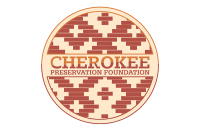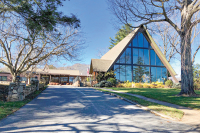Enamored with stacked stone and timber, planners push mountain look
Western North Carolina has so embraced mountain vernacular architecture that local planning boards across the area are prodding developers into adopting the style.
While officials stop short of handing over a checklist to architects that includes stacked stone, steep pitched roofs and exposed timbers, they strongly encourage using natural materials and earthy colors. The result seems to be an overall rise in mountain-style architecture in areas that promote them.
So far, such appearance standards have been adopted in Waynesville, Cashiers, Cherokee, and a section of U.S. 441 in Jackson County that leads to Cherokee.
Maggie Valley hopes to jump on the bandwagon, with a planning board now ruminating on a draft of land development standards.
The planning boards that adopt these policies don’t see them as dictatorial. They say the policies promote a cohesive look that is both attractive and good for tourism. Moreover, mountain-style architecture is representative of Western North Carolina and connotes a sense of place.
“It’s who we are,” said Linda Cable, planning director for Jackson County. “It blends in with the nature, the geography and the scenery.”
Related Items
The quest for harmony
Places that have adopted design standards all seem to echo the mountain theme. Some encourage, others mandate principles like these:
• warm, natural colors like beige, dark green and brown, rather than flamboyant colors like hot pink or neon green.
• articulated frontages with windows, porticos or varying color tones, rather than flat, monotonous building fronts.
• natural siding like wood, log, native stone, or brick, rather than vinyl or stucco.
Brandon Stephens, building construction manager for the Eastern Band of Cherokee Indians, said Cherokee’s building standards mainly discourage architecture that is discordant with the mountain environs.
“What we’re trying to go for is those colors that complement the mountains,” said Stephens. “Anything from dirt to the leaves on trees.”
According to Cable, these kinds of standards are appropriate for communities that would like to maintain a mountain character as they grow.
Cable denied that the design standards scare off developers from the region.
“I don’t think that’s an issue,” said Cable. “Once a company understands that a community has guidelines, then they are willing to modify their plans.”
One example of a corporate giant’s compliance is the Wendy’s that was developed in Cashiers under the standards. It features heavy rock work and a sign with more subdued colors than the company’s usual vivid red logo.
The new Wal-Mart in Waynesville also bowed down to the town’s community appearance commission’s demands a few years ago.
After the company’s architects offered the same-old big-box design for its new location, the commission sternly pointed them back to the drawing board.
That’s when Patrick Bradshaw, an engineer in Waynesville, took the Wal-Mart architects on a 30-minute whirlwind driving tour of the town to give them a flavor of what the commission members desired.
Wal-Mart’s architects came back with a better understanding of the town’s vision, bringing with them a design that incorporated ornamental exposed timber beams, stacked stone entryways, and more neutral, natural colors, successfully winning commission members’ hearts.
No “hard and fast”
Though many businesses have opted for mountain-style architecture under the appearance standards, towns have been flexible enough to allow wholly different looks.
Mib Medford, a member of the Waynesville Community Appearance Commission, stressed there is no “hard and fast” with the standards since they are simply guidelines.
Though design standards give businesses various options for complying, some styles will fit in better than others.
Bradshaw pointed out that both Wal-Mart and the much more contemporary McDonald’s in Waynesville were developed under the same standards. But it’s obvious to him that Wal-Mart’s design fits in better with the town’s character.
“Which one makes you feel like you’re in the mountains?” asked Bradshaw.
Maggie Valley, which is following the lead of towns like Waynesville and Cashiers, is still working on drafting the best possible design standards for future construction and major renovations.
Maggie Valley’s planning director Nathan Clark said the town’s mantra would be “ballpark, not bulls-eye,” allowing for accommodations in design rather than requiring every building to feature mountain-style.
“It’s not cut and dry, where everything has to be a Swiss chalet,” said Clark. “We still want to have some of that Maggie Valley individual style and flair.”
Clark says Maggie Valley’s proposed design standards would give the town a “new spark” that would jumpstart its tourism-dependent economy.









